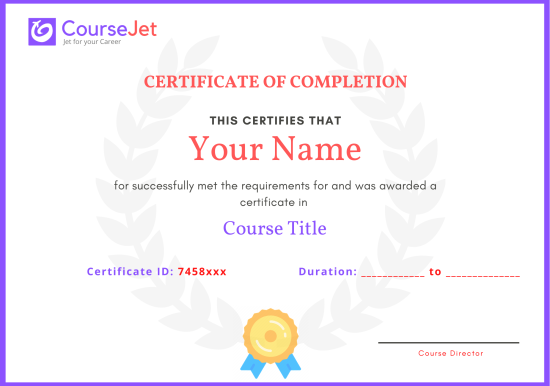Module 01 : Manage Solutions
Plan for customization
- Define CRM; differentiate configuration, customization, extending and development; design appropriate customizations; identify documents in the Microsoft Dynamics CRM implementation guide
Solutions Management
- Understand business requirements, understand the benefits of solutions, create solutions, export managed and unmanaged solutions, import solutions, describe default solution, specify a publisher, work with multiple solutions, describe solution components
Manage customizations
- Describe component dependencies; describe customization concepts for entities, fields, forms, views and charts; publish customizations
Module 02 : Manage Security
Understand security concepts
- Describe business units, describe Microsoft Dynamics CRM security features, identify privileges and access levels for security roles, describe security role interaction with business units
Manage access
- Create and maintain users, create owner teams, describe owner teams and sharing, manage security roles for users and teams, differentiate owner teams and access teams, create access team templates, add access team sub-grids to forms
Work with field-level security
- Identify entities for which field-level security is available, create field security profiles, define field permissions, add field permissions, assign field security profiles to users and teams
Manage auditing
- Enable entity-level auditing, enable field-level auditing
Module 03 : Customize entities
Create custom entities
- Describe entity customization concepts; create custom entities; configure display names, plural names and schema names; configure entity ownership; create custom activity entities; set primary fields
Manage custom entities
- Configure entity properties including display areas, communication and collaboration options, fixed properties, data services options, Microsoft Outlook options, mobile options; modify custom entities; delete custom entities; identify dependencies
Module 04 : Customize fields
Create and maintain fields
- Describe field customization concepts, create fields, describe ways new fields can be created, delete custom fields
Configure field properties
- Identify field data types; identify field display formats; configure the requirement level field property; configure searchable, audit and field security field properties; identify properties that can be changed for existing fields
Manage special fields
- Configure local and global option sets, configure status and status reason fields, describe dependencies, create calculated fields, describe the purpose of rollup fields, create rollup fields
Module 05 : Manage Relationships
Describe entity relationships
- Identify different relationship types; describe one-to-many, many-to-many and manual many-to-many relationships; describe special many-to-many relationships such as marketing list members, queue items and follows; identify supported and unsupported relationships; identify cascading behaviors such as Assign, Share, Unshared, Re-Parent, Delete
Manage entity relationships
- Create entity relationships, map fields, manage connections and connection roles, work with relationship hierarchy visualization
Module 06 : Customize forms
Understand form customizations
- Describe tab and section structure; add form fields; add sub-grids; add social, activity and notes controls; add other components and controls; preview form customizations
Create and edit forms
- Copy existing forms or create new forms, configure quick create forms, create nested quick create forms, create quick view forms
Manage multiple forms
- Identify scenarios where multiple forms are useful, specify form order, assign roles to forms
Manage mobile forms
- Describe mobile forms for Microsoft Dynamics CRM for tablets, describe how forms are displayed to the user in the Microsoft Dynamics CRM for tablets app, describe when designing mobile forms
Module 07 : Customize Views
Work with system views
- Differentiate between system, public and personal views; describe view columns and view filtering; configure multi-entity search; differentiate between multi-entity, advanced find and quick find search; identify associated views; configure lookup views; configure quick find views
Create and configure custom views
- Copy existing views, create custom views, build queries, add fields to views, arrange fields, configure field properties, sort fields, set the default public view, share views, disable views, delete views
Manage custom views
- Set the default public view, share views, identify entities for which hierarchical views are available, create hierarchical views
Module 08 : Customize charts and dashboards
Understand chart concepts
- Identify design considerations for charts, differentiate between personal and system charts, identify limitations of the chart designer tools in the user interface
Create and configure charts
- Create system charts and personal charts, describe chart types and options, add series and categories, choose chart views for chart preview, identify fields available for use in charts, include fields from parent entities in charts
Reuse charts
- Export and import charts, identify steps to update chart XML, convert personal charts to system charts, convert system charts to personal charts
Create, configure and manage dashboards
- Differentiate between personal and system dashboards, configure dashboard components, create lists (views), display charts on dashboards, manage security roles for dashboards
Module 09 : Configure business process flow and business rules
Understand business process flow concepts
- Describe the purpose of business process flows; differentiate between different types of processes; identify business process flow components including steps and stages, built-in business processes, custom business processes, entities that participate in business processes and spanning entities
Create and manage business process flows
- Create business process flows, define stages and steps, describe role-based business processes, describe branching logic for guided processes, describe use cases for the client API for business process flows
Create and manage business rules
- Identify use cases for business rules; differentiate between client-side and server-side logic; create business rules; configure business rule conditions; apply AND/OR, IF…ELSE, IF…THEN logic in business rules; identify business rule actions; enable business rules for forms
Module 10 : Plugin and custom workflow development
- Steps for creating plugins/workflow
- Plugin registration process
- Debug plugin
Module 11 : Overview of MSCRM Web Services
- Discovery Services
- Organization Services


